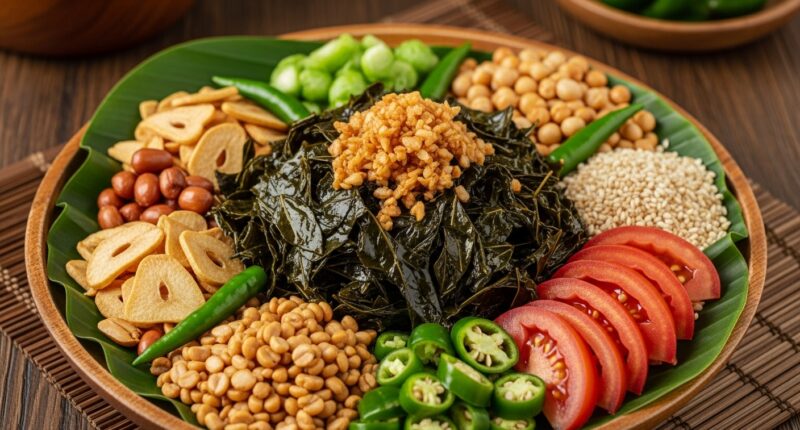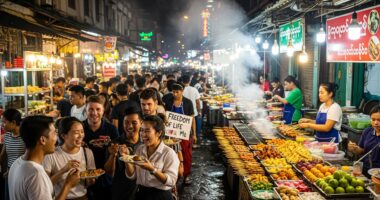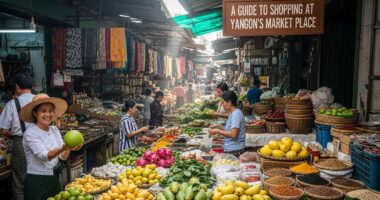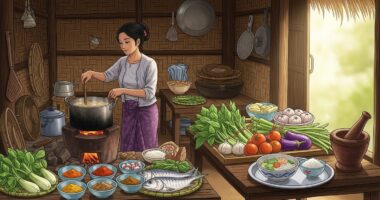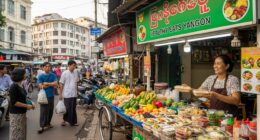Myanmar, also known as Burma, is a country rich in culture and tradition. One of its treasures is its food. While Myanmar cuisine shares some similarities with Indian, Chinese, and Thai foods, it also has its own unique style. Let’s explore how Myanmar foods are different from other cuisines.
Use of Special Ingredients
Fermented Flavors
A key ingredient in Myanmar food is ngapi, a fermented fish paste. It is used in curries, soups, and dipping sauces. This gives Burmese dishes a strong, salty, and rich taste that is not common in other Asian cuisines.
Tea Leaves in Food
Myanmar is one of the few countries where tea leaves are eaten. Lahpet Thoke, or tea leaf salad, is a national favorite made with fermented tea leaves, garlic oil, nuts, and sesame seeds. This is very different from Indian or Thai salads.
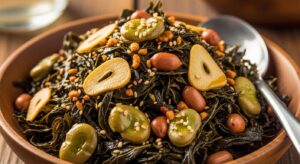
Balance of Taste and Texture
Salads with Crunch and Spice
Unlike Western salads that are light, Myanmar salads are full meals. They are made with noodles, beans, fried garlic, lime, and chili. The mix of soft and crunchy textures makes them stand out.
Oil and Soup Balance
Burmese curries use more oil than Thai or Chinese curries. The oil helps preserve food in hot weather. To balance this, meals are often served with light soups to refresh the taste.
Regional Diversity
Shan and Rakhine Foods
Different regions in Myanmar have their own flavors. Shan dishes like Meeshay use noodles with tangy sauces, while Rakhine dishes are spicier and often include seafood. This variety is greater than in many other cuisines, where dishes are more uniform.
Village Style Cooking
In many rural areas, meals are cooked with fresh, seasonal vegetables and simple spices. This makes the food very natural compared to the heavier, more processed foods in other countries.
Eating Style and Culture
Meals with Many Small Dishes
A traditional Myanmar meal includes rice with several small plates of curry, vegetables, soup, and dips. This is different from Western meals, which often focus on one main dish.
Tea Shop Culture
Tea shops are a big part of Burmese food culture. People enjoy tea with snacks like fried dough, noodles, or breads. These shops are social spaces, similar to cafés, but with a stronger focus on both food and community.
A Unique Culinary Identity
The differences in Myanmar cuisine come from its ingredients, balance of flavors, regional diversity, and eating culture. From tea leaf salad to fermented fish paste and shared meals, Burmese food has its own identity. While it borrows ideas from neighbors, it remains special and original. For anyone who loves food, exploring Myanmar cuisine is a unique experience you cannot find anywhere else.
